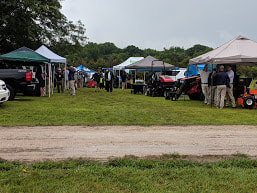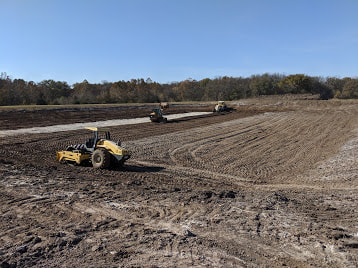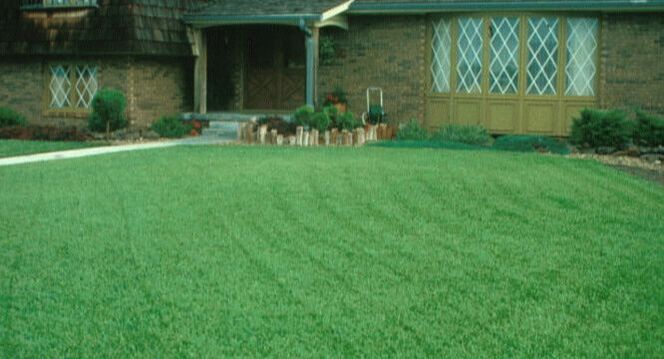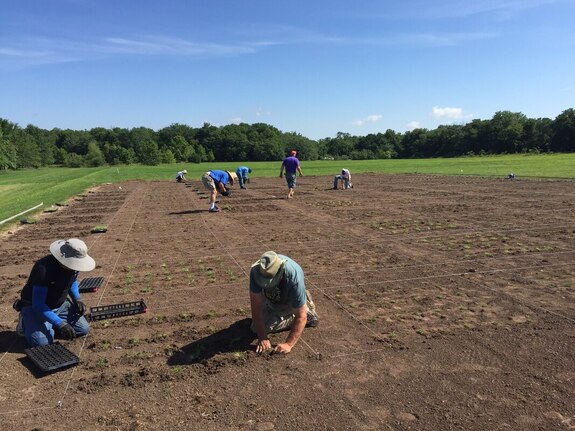Welcome to the K-State Olathe Horticulture Center's quarterly newsletter. To read each article, just click on the + symbol to the right of the headline. If you prefer a printable copy of the newsletter, click HERE for a pdf of this edition.
Kansas State University Agricultural Experiment Station and Cooperative Extension Service
K-State Research and Extension is an equal opportunity provider and employer. These materials may be available in alternative formats. Issued in furtherance of Cooperative Extension Work, Acts of May 8 and June 30, 1914, as amended. Kansas State University, County Extension Councils, Extension Districts, and United States Department of Agriculture Cooperating, J. Ernest Minton, Director
Kansas State University Agricultural Experiment Station and Cooperative Extension Service
K-State Research and Extension is an equal opportunity provider and employer. These materials may be available in alternative formats. Issued in furtherance of Cooperative Extension Work, Acts of May 8 and June 30, 1914, as amended. Kansas State University, County Extension Councils, Extension Districts, and United States Department of Agriculture Cooperating, J. Ernest Minton, Director
ACTIVITIES at ohc
It was a busy Summer at the Olathe Horticulture Center and now Fall is nearly over as preparations begin to start the growing cycle over again after the first of the year.
Summer Field Days
OHC hosted two field days over the summer. The first was Turf Field Day on August 1 followed by the Commercial Vegetable Field Day on August 12.
Turf Field Day featured updates and tours of turf research plots, forestry research, and a robust trade show. A rainy morning led to schedule changes for the day but the field day was successful overall with attendance over 300.
Commercial Vegetable Field Day featured a walking tour with research and variety trial updates including an update on industrial hemp, and a tour of the Extension Master Gardeners Backyard Garden. The evening concluded with a cookout dinner and recognition of the 2019 Growing Growers apprenticeship graduate.
Summer Field Days
OHC hosted two field days over the summer. The first was Turf Field Day on August 1 followed by the Commercial Vegetable Field Day on August 12.
Turf Field Day featured updates and tours of turf research plots, forestry research, and a robust trade show. A rainy morning led to schedule changes for the day but the field day was successful overall with attendance over 300.
Commercial Vegetable Field Day featured a walking tour with research and variety trial updates including an update on industrial hemp, and a tour of the Extension Master Gardeners Backyard Garden. The evening concluded with a cookout dinner and recognition of the 2019 Growing Growers apprenticeship graduate.
School Field Experiences & Field Days
OHC hosted students from the Kansas City Kansas Community College Kids on Campus summer day camp on June 28. The students learned about soil structure and health, planted tomatoes, visited the EMG Backyard Garden, got to experience pollinators up close (the bees were extraordinarily active the day of the visit), and enjoyed a round on the putting green – all before lunch!
In September, horticulture science students from Olathe North High School, visited for a Field Experience where they learned about tomato grafting and each got the opportunity to graft five tomato plants. Extension Master Gardeners were on hand to teach about soil structure and plant propagation.
OHC hosted students from the Kansas City Kansas Community College Kids on Campus summer day camp on June 28. The students learned about soil structure and health, planted tomatoes, visited the EMG Backyard Garden, got to experience pollinators up close (the bees were extraordinarily active the day of the visit), and enjoyed a round on the putting green – all before lunch!
In September, horticulture science students from Olathe North High School, visited for a Field Experience where they learned about tomato grafting and each got the opportunity to graft five tomato plants. Extension Master Gardeners were on hand to teach about soil structure and plant propagation.
Industrial Hemp Research
Several OHC growing plots were dedicated to research on industrial hemp for the summer. High tunnel and outdoor plots were planted in June and harvested in September. Research analysis is being run now. Plans are underway to plant more research plots during the 2020 growing season. Look for results to be available over the winter and be watching for details about a KSU Hemp Conference set for February 4, 2020 in Wichita.
Several OHC growing plots were dedicated to research on industrial hemp for the summer. High tunnel and outdoor plots were planted in June and harvested in September. Research analysis is being run now. Plans are underway to plant more research plots during the 2020 growing season. Look for results to be available over the winter and be watching for details about a KSU Hemp Conference set for February 4, 2020 in Wichita.
Wheat Research
OHC welcomes wheat research to the growing fields. Dr. Jessica Rupp, assistant professor in the KSU Plant Pathology Department, and her crew planted the OHC’s first wheat plot this fall.
OHC welcomes wheat research to the growing fields. Dr. Jessica Rupp, assistant professor in the KSU Plant Pathology Department, and her crew planted the OHC’s first wheat plot this fall.
Pond Progress
As of release of this newsletter, the OHC pond has been sealed and is full of water. The pond was built to hold water for irrigating vegetable plots, but it didn’t hold water. This fall the bottom and sides of the pond were sealed with clay and it should finally hold water to be used on research plots.
As of release of this newsletter, the OHC pond has been sealed and is full of water. The pond was built to hold water for irrigating vegetable plots, but it didn’t hold water. This fall the bottom and sides of the pond were sealed with clay and it should finally hold water to be used on research plots.
Turfgrass program update
By Jack Fry, Ph.D.
This is the first full year I’ve been at the Olathe Center, and several projects are underway to support the turf industry in the state; each is highlighted below. In addition, the K-State turf team publishes an annual research report that summarizes a number of projects, including some highlighted below. This can be accessed through this link: https://www.k-state.edu/turf/research/index.html
Tall Fescue Cultivar Evaluation
Over 130 experimental tall fescue cultivars are being evaluated as part of the National Turfgrass Evaluation Program (NTEP). Tall fescue continues to be the favorite home lawn grass much of Kansas. This summer, we had a significant outbreak of brown patch, which allowed to identify some entries which were more tolerant of the disease than others. Data are collected monthly on overall quality and other performance traits. To access NTEP data, visit ntep.org.
This is the first full year I’ve been at the Olathe Center, and several projects are underway to support the turf industry in the state; each is highlighted below. In addition, the K-State turf team publishes an annual research report that summarizes a number of projects, including some highlighted below. This can be accessed through this link: https://www.k-state.edu/turf/research/index.html
Tall Fescue Cultivar Evaluation
Over 130 experimental tall fescue cultivars are being evaluated as part of the National Turfgrass Evaluation Program (NTEP). Tall fescue continues to be the favorite home lawn grass much of Kansas. This summer, we had a significant outbreak of brown patch, which allowed to identify some entries which were more tolerant of the disease than others. Data are collected monthly on overall quality and other performance traits. To access NTEP data, visit ntep.org.
Zoysiagrass Cultivar Evaluation
With the help of Olathe volunteers, 36 experimental zoysiagrasses were planted as plugs this summer as part of a new NTEP trial. Many of these are spreading quickly and some have nearly full coverage. The true test for these zoysiagrasses will be cold winter temperatures. Cold is the limiting factor for selectin zoysiagrass cultivars for use in our region of the country.
With the help of Olathe volunteers, 36 experimental zoysiagrasses were planted as plugs this summer as part of a new NTEP trial. Many of these are spreading quickly and some have nearly full coverage. The true test for these zoysiagrasses will be cold winter temperatures. Cold is the limiting factor for selectin zoysiagrass cultivars for use in our region of the country.
Selecting Disease-Tolerant and Fine-Textured Zoysiagrasses for Golf Course Use
The United States Golf Association has supported research to breed and evaluate new zoysiagrasses that are suited to our climate. This work has been led by researchers at K-State, Texas A&M, and Purdue, and includes identifying grasses that are tolerant of the most common disease we deal with here, large patch, and others with very fine texture. The project to evaluate tolerance to large patch began in 2012. We have now identified 10 experimental grasses that have been shown to have better tolerance to the disease than Meyer zoysia, the standard in this area. These ten grasses were planted this summer in small plots on the driving range at Shadow Glen Country Club. We appreciate the support of Scott Johnson, superintendent at Shadow Glen (and K-State graduate), in helping establish and maintain these grasses.
Over the past two years, we have planted over 1,000 experimental zoysiagrasses as small space plantings to evaluate their winter survival and quality characteristics. After two winters, we transplanted about 70 zoysiagrasses this summer, which will continue to be evaluated.
The United States Golf Association has supported research to breed and evaluate new zoysiagrasses that are suited to our climate. This work has been led by researchers at K-State, Texas A&M, and Purdue, and includes identifying grasses that are tolerant of the most common disease we deal with here, large patch, and others with very fine texture. The project to evaluate tolerance to large patch began in 2012. We have now identified 10 experimental grasses that have been shown to have better tolerance to the disease than Meyer zoysia, the standard in this area. These ten grasses were planted this summer in small plots on the driving range at Shadow Glen Country Club. We appreciate the support of Scott Johnson, superintendent at Shadow Glen (and K-State graduate), in helping establish and maintain these grasses.
Over the past two years, we have planted over 1,000 experimental zoysiagrasses as small space plantings to evaluate their winter survival and quality characteristics. After two winters, we transplanted about 70 zoysiagrasses this summer, which will continue to be evaluated.
Management of Innovation Zoysiagrass
This summer, Sod Shop donated Innovation zoysiagrass sod at the Olathe Center so we can conduct future research on it. Innovation was released by K-State and Texas A&M in 2017 and is now being grown by nearly 30 sod producers in 15 states. It is a dense, fine textured cultivar, and we need to conduct research to determine how to best manage it in our region.
This summer, Sod Shop donated Innovation zoysiagrass sod at the Olathe Center so we can conduct future research on it. Innovation was released by K-State and Texas A&M in 2017 and is now being grown by nearly 30 sod producers in 15 states. It is a dense, fine textured cultivar, and we need to conduct research to determine how to best manage it in our region.
Nitrogen Fertilization Source and Timing Effects on Bermudagrass
Tony Goldsby, Ph.D. is a K-State graduate and now oversees research for The Andersons. Tony is working with us at Olathe to evaluate several nitrogen sources and their application timing for effects on bermudagrass.
Tony Goldsby, Ph.D. is a K-State graduate and now oversees research for The Andersons. Tony is working with us at Olathe to evaluate several nitrogen sources and their application timing for effects on bermudagrass.
If you’re interested in knowing about any of these projects, or have questions about turf research in Olathe, please feel free to reach out to me – [email protected].
emg bACKYARD GARDEN
Extension Master Gardener Backyard Garden (EMG BYG) volunteers kept busy over the summer and into the fall. EMGs hosted Open Garden every Wednesday from May through August. Each week volunteers were available in the BYG to host visitors and teach about their research-based garden areas. One Wednesday each month featured a special topic, such as Spring Perennial Flowers, What’s Growing in BYG, All American Selections Display, Tomato Tasting Day, and a class on Arranging Flowers from your Garden. More than 600 people took advantage of the opportunity to experience the BYG and learn from EMGs during Open Garden Wednesdays over the summer.
EMGs also took time to honor two of their founding members, Mary Lou Carson and Linda Burgess, with an Evening in the Garden fundraiser in August. The event drew a crowd of at least 100 to the BYG enjoying food, fellowship and honoring the history of the BYG. Members of the Carson and Burgess families were special guests at the event. Other special guests included Alan Stevens, retired director of the Olathe Horticulture Center, and Dennis Patton, Extension Horticulture Agent in Johnson County. Stevens, Patton, and Larry Justice (current EMG) offered their historical perspectives on the establishment and growth of the BYG demonstration area. An engraved native stone was unveiled to honor Mary Lou’s and Linda’s leadership in helping establish the BYG. The stone remains on display at the garden area.
EMGs also took time to honor two of their founding members, Mary Lou Carson and Linda Burgess, with an Evening in the Garden fundraiser in August. The event drew a crowd of at least 100 to the BYG enjoying food, fellowship and honoring the history of the BYG. Members of the Carson and Burgess families were special guests at the event. Other special guests included Alan Stevens, retired director of the Olathe Horticulture Center, and Dennis Patton, Extension Horticulture Agent in Johnson County. Stevens, Patton, and Larry Justice (current EMG) offered their historical perspectives on the establishment and growth of the BYG demonstration area. An engraved native stone was unveiled to honor Mary Lou’s and Linda’s leadership in helping establish the BYG. The stone remains on display at the garden area.


















